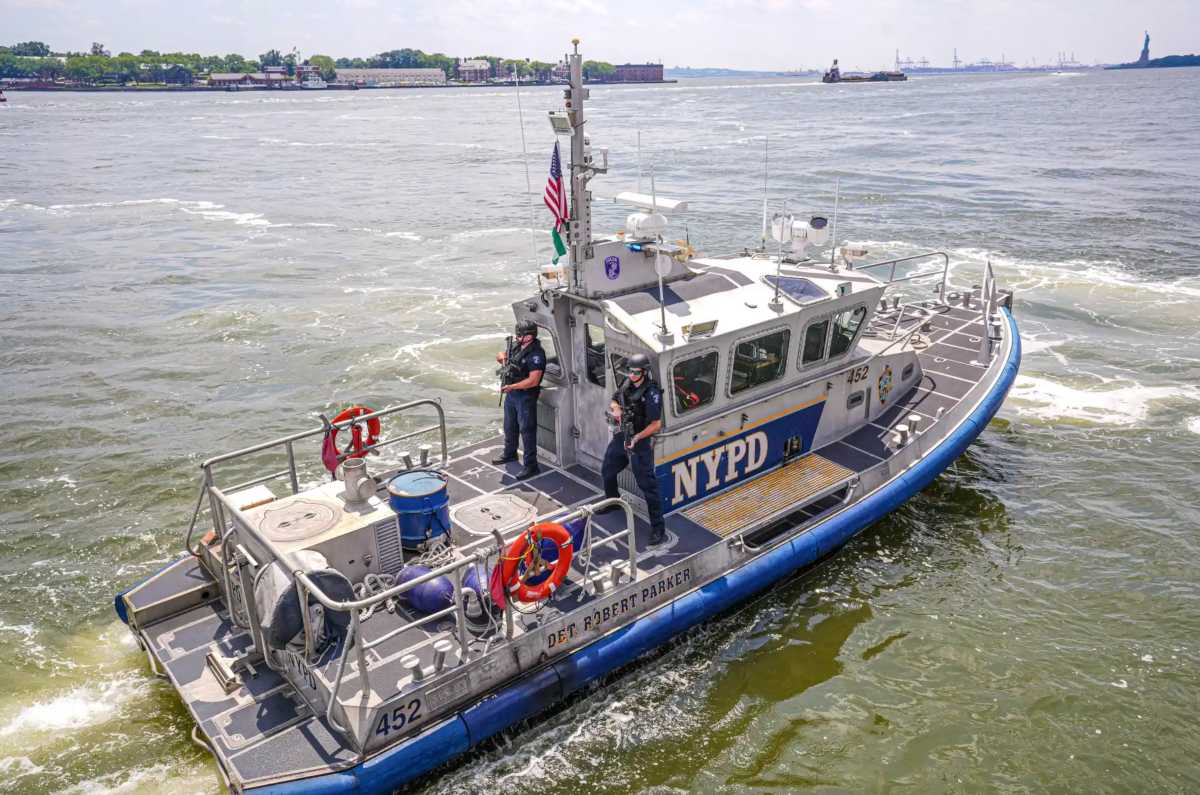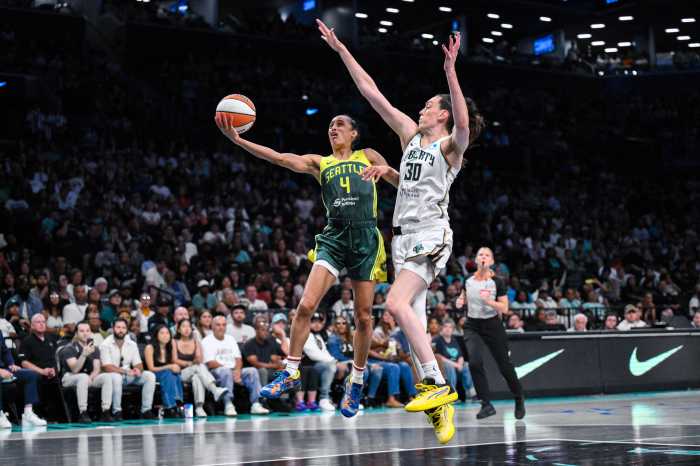While George Steinbrenner holds the city in suspense about his plans to either keep the Yankees in the Bronx or move them to the Jersey Meadowlands or a billion dollar stadium on the West Side, the Mets have been quietly making plans to move their team out of Shea Stadium.
But this move will not cause the heartache to Queens residents that the Dodgers move to California gave to Brooklynites or that a Yankee move would bring to the Bronx. The Mets move, in fact, will only be one of 100 feet from the northeast corner of Shea Stadium.
When the season opens for the Mets in April of 2001, the team will walk out onto their field of dreams–a gleaming new ballpark with a retractable roof and a design that will bring back the intimate feel of the old Ebbets Field.
The Mets management is putting the final touches on a plan that will be officially unveiled early next year. The new stadium–ts name has not yet been determined (see editorial page 8)–will be constructed on a site that is presently part of the parking lot for the existing Shea. Once the new stadium is built, Shea will be torn down and its site will become a parking lot for the new stadium.
The 33-year-old Shea seats 55,000 and was first designed to accommodate both baseball and football.The new stadium will seat 40,000 people and will be designed to be used not only for baseball, but for concerts, the NCAAFinal Four and conventions. Its retractable roof on rails will permit holding those kind of events which Shea is not able to accommodate.
While the new facility will have luxury boxes, high tech video and audio systems and state-of-the-art facilities,it will also evoke the past. Mets president FredWilpon, who is currently putting the finishing touches on this plan, wants the new stadium to have the quaint red brick ballpark feel like the legendary home of the Brooklyn Dodgers’ Ebbets Field.
To accomplish this, there will be a lowered right field wall and a pedestrian concourse to bring in the community as well as intimate close to the action seating. It will contain three tiers of seats encircling the first and third base lines. It will have the right field open to view from the pedestrian concourse on 126 St.
The roof will be in three sections that will rollback onto a structure to be built on the south side of the ballpark.The pedestrian mall will begin at what is now home plate at Shea and extend directly into the new stadium. There will be two large garages across the street from the new stadium along Roosevelt Ave., providing considerably more parking than exists today.The additional parking will also alleviate a good portion of the parking problem that exists when both the Mets and the U.S. Open are in session. The new Arthur Ashe Stadium in adjacent Flushing Meadows-Corona park has expanded the capacity for the annual tennis championships and makeshift parking lots have been set up on parkland far from the stadium. The new expanded Shea parking will triple the current amount of parking spaces.
The plan will also call for two large retail areas and a ChampionshipPlaza outside the main entrance which will be the Mets version of the Yankee Monument Park, saluting Met greats like Casey Stengel,Gil Hodges, Tom Seaver,Tommy Agee, Ron Swoboda, Keith Hernandez, Mookie Wilson, Willie Mays, Ed Kranepool, etc.
The Willets Point subway station will be renovated and connect directly to the new stadium.The cost for all of this is being estimated at over $450 million. Although the Mets are going to foot the bill for a good portion of this, there will be a significant part to be picked up by the city.
Wilpon is quietly negotiating with the city, and it is not yet certain how much of the bill will be picked up by the taxpayers. Unlike the sometimes fractious relations between the city and Yankee owner George Steinbrenner, the negotiations between the Mets and the city have been downright cordial. Officials at Queens BoroughHall have praised Wilpon’s style, saying he has "acted like a gentleman."
Although Met co-owner Nelson Doubleday had toyed with the idea of moving the Mets to a new stadium to be built in Nassau County, Wilpon never wavered from his determination to keep the Mets in Queens. His original plan called for construction of a high-tech theme park adjacent to the new stadium but he abandoned that project early in the planning stages. It is expected that the plan will win easy approval and because the new stadium will occupy roughly the same site as Shea, it will probably not be the focus of community opposition.
Shea Stadium opened on April 17, 1964 and it was constructed by the city in conjunction with the World’s Fair which took place in the adjacent park. First it was to be called Flushing Meadows Park Municipal Stadium but it was later named for attorney William A.Shea, the man responsible for bringing a National League team back to New York after the loss of the Dodgers to California.
Shea Stadium’s rich history will likely stir a great deal of nostalgia when it is demolished. It’s first years it was host to the football Jets and the Mets, then a hopeless but lovable team under the direction of legendary manager Casey Stengel. It was the scene of a huge fan free-for-all on the field when the 1969 "Miracle Mets"came from the bottom to win the World Series. Nineteen hundred seventy two saw a second Series and 1986 came a second Met World Series victory. Nineteen hundred sixty nine also saw the Jets and their powerful quarterback Joe Nameth in the Super Bowl.
For three seasons in the early 1970s during the reconstruction of Yankee Stadium,Shea played host to both the Yankees and the football Giants.Shea fell into a period of disrepair and the conditions forced Jets owner Leon Hess to pack up and move the team to the New Jersey Meadowlands.In the early 1990s, a major overhaul of the stadium was undertaken, including a new blue facade with neon sculptures replacing the old orange and blue grillwork.
Some of the history of Shea has nothing to do with baseball.The Beatles performed a concert there in 1965–one of the most memorable moments in rock ’n roll history.They performed a second time in 1966. The Who, Simon and Garfunkel,EltonJohn, Billy Joel, TheRolling Stones and others have staged concerts there. Billy Graham took his crusade to Shea in the 1970s and Pope John Paul II came to the stadium in 1978.
Earlier this year President Bill Clinton spoke at Shea to honor Jackie Robinson on the 50th anniversary of the ballplayer’s breaking of the color barrier. Robinson’s name is one being considered for the new stadium.
When Shea opened in 1964 it was considered totally modern and state-of-the-art. However the trend in recent years has been to abandon the massive arena type of stadium in favor of a return to more intimate stadiums like the arenas of old. Baltimore’s Camden Yards and Chicago’s new Wrigley Field used this concept and it has proved to be highly successful and popular.





























